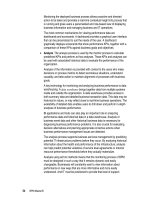Dermatology handbook for medical students 2nd edition 2014 final2(2)
Bạn đang xem bản rút gọn của tài liệu. Xem và tải ngay bản đầy đủ của tài liệu tại đây (3.03 MB, 76 trang )
Dermatology
A handbook for medical students & junior doctors
British Association of Dermatologists
Dermatology: Handbook for medical students & junior doctors
This publication is supported by the British Association of Dermatologists.
First edition 2009
Revised first edition 2009
Second edition 2014
For comments and feedback, please contact the author at
1
British Association of Dermatologists
Dermatology: Handbook for medical students & junior doctors
Dermatology
A handbook for medical students & junior doctors
Dr Nicole Yi Zhen Chiang MBChB (Hons), MRCP (UK)
Specialty Registrar in Dermatology
Salford Royal NHS Foundation Trust
Manchester M6 8HD
Professor Julian Verbov MD FRCP FRCPCH CBiol FSB FLS
Professor of Dermatology
Consultant Paediatric Dermatologist
Alder Hey Children’s Hospital
Liverpool L12 2AP
2
British Association of Dermatologists
Dermatology: Handbook for medical students & junior doctors
Contents
Preface
5
Foreword
6
What is dermatology?
7
Essential Clinical Skills
8
Taking a dermatological history
Examining the skin
Communicating examination findings
8
9
10
Background Knowledge
23
Functions of normal skin
Structure of normal skin and the skin appendages
Principles of wound healing
23
23
27
Emergency Dermatology
28
Urticaria, Angioedema and Anaphylaxis
Erythema nodosum
Erythema multiforme, Stevens-Johnson syndrome, Toxic epidermal necrolysis
Acute meningococcaemia
Erythroderma
Eczema herpeticum
Necrotizing fasciitis
Skin Infections / Infestations
29
30
31
32
33
34
35
36
Erysipelas and cellulitis
Staphylococcal scalded skin syndrome
Superficial fungal skin infections
37
38
39
Skin Cancer
41
Basal cell carcinoma
Squamous cell carcinoma
Malignant melanoma
42
43
44
Inflammatory Skin Conditions
46
Atopic eczema
Acne vulgaris
Psoriasis
47
49
50
Blistering Disorders
52
Bullous pemphigoid
Pemphigus vulgaris
53
54
3
British Association of Dermatologists
Dermatology: Handbook for medical students & junior doctors
Common Important Problems
55
Chronic leg ulcers
Itchy eruption
A changing pigmented lesion
Purpuric eruption
A red swollen leg
56
58
60
62
64
Management
65
Emollients
Topical/Oral steroids
Oral aciclovir
Oral antihistamines
Topical/Oral antibiotics
Topical antiseptics
Oral retinoids
66
66
66
66
67
67
67
Practical Skills
68
Patient education
Written communication
Prescribing skills
Clinical examination and investigations
71
69
70
70
71
Acknowledgements
72
4
British Association of Dermatologists
Dermatology: Handbook for medical students & junior doctors
Preface
This Handbook of Dermatology is intended for senior medical students and newly qualified
doctors.
For many reasons, including modern medical curriculum structure and a lack of suitable
patients to provide adequate clinical material, most UK medical schools provide inadequate
exposure to the specialty for the undergraduate. A basic readable and understandable text
with illustrations has become a necessity.
This text is available online and in print and should become essential reading. Dr Chiang is to
be congratulated for her exceptional industry and enthusiasm in converting an idea into a
reality.
Julian Verbov
Professor of Dermatology
Liverpool 2009
Preface to the 2nd edition
Nicole and I are gratifed by the response to this Handbook which clearly fulfils its purpose.
The positive feedback we have received has encouraged us to slightly expand the text and
allowed us to update where necessary. I should like to thank the BAD for its continued
support.
Julian Verbov
Professor of Dermatology
Liverpool 2014
5
British Association of Dermatologists
Dermatology: Handbook for medical students & junior doctors
Foreword to First edition
There is a real need for appropriate information to meet the educational needs of doctors at
all levels. The hard work of those who produce the curricula on which teaching is based can
be undermined if the available teaching and learning materials are not of a standard that
matches the developed content. I am delighted to associate the BAD with this excellent
handbook, designed and developed by the very people at whom it is aimed, and matching
the medical student and junior doctor curriculum directly. Any handbook must meet the
challenges of being comprehensive, but brief, well illustrated, and focused to clinical
presentations as well as disease groups. This book does just that, and is accessible and easily
used. It may be read straight through, or dipped into for specific clinical problems. It has
valuable sections on clinical method, and useful tips on practical procedures. It should find a
home in the pocket of students and doctors in training, and will be rapidly worn out. I wish it
had been available when I was in need, I am sure that you will all use it well in the pursuit of
excellent clinical dermatology!
Dr Mark Goodfield
President of the British Association of Dermatologists
6
British Association of Dermatologists
Dermatology: Handbook for medical students & junior doctors
What is dermatology?
•
Dermatology is the study of both normal and abnormal skin and associated
structures such as hair, nails, and oral and genital mucous membranes.
Why is dermatology important?
•
Skin diseases are very common, affecting up to a third of the population at any one
time.
•
Skin diseases have serious impacts on life. They can cause physical damage,
embarrassment, and social and occupational restrictions. Chronic skin diseases may
cause financial constraints with repeated sick leave. Some skin conditions can be
life-threatening.
•
In 2006-07, the total NHS health expenditure for skin diseases was estimated to be
around ₤97 million (approximately 2% of the total NHS health expenditure).
What is this handbook about?
•
The British Association of Dermatologists outlined the essential and important
learning outcomes that should be achieved by all medical undergraduates for the
competent assessment of patients presenting with skin disorders (available on:
/>cation/(Link2)%20Core%20curriculum.pdf).
•
This handbook addresses these learning outcomes and aims to equip you with the
knowledge and skills to practise competently and safely as a junior doctor.
7
British Association of Dermatologists
Essential Clinical Skills
•
Detailed history taking and examination provide important diagnostic clues in the
assessment of skin problems.
Learning outcomes:
1. Ability to take a dermatological history
2. Ability to explore a patient’s concerns and expectations
3. Ability to interact sensitively with people with skin disease
4. Ability to examine skin, hair, nails and mucous membranes systematically
showing respect for the patient
5. Ability to describe physical signs in skin, hair, nails and mucosa
6. Ability to record findings accurately in patient’s records
Taking a dermatological history
•
Using the standard structure of history taking, below are the important points to
consider when taking a history from a patient with a skin problem (Table 1).
•
For dark lesions or moles, pay attention to questions marked with an asterisk (*).
Table 1. Taking a dermatological history
Main headings
Key questions
Presenting complaint
Nature, site and duration of problem
History of presenting complaint
Initial appearance and evolution of lesion*
Symptoms (particularly itch and pain)*
Aggravating and relieving factors
Previous and current treatments (effective or not)
Recent contact, stressful events, illness and travel
History of sunburn and use of tanning machines*
Skin type (see page 70)*
Past medical history
History of atopy i.e. asthma, allergic rhinitis, eczema
History of skin cancer and suspicious skin lesions
Family history
Family history of skin disease*
Social history
Occupation (including skin contacts at work)
Improvement of lesions when away from work
Medication and allergies
Regular, recent and over-the-counter medications
Impact on quality of life
Impact of skin condition and concerns
8
British Association of Dermatologists
Essential Clinical Skills – Taking a dermatological history
Dermatology: Handbook for medical students & junior doctors
Essential Clinical Skills – Examining the skin
Dermatology: Handbook for medical students & junior doctors
Examining the skin
•
There are four important principles in performing a good examination of the skin:
INSPECT, DESCRIBE, PALPATE and SYSTEMATIC CHECK (Table 2).
Table 2. Examining the skin
Main principles
Key features
INSPECT in general
General observation
Site and number of lesion(s)
If multiple, pattern of distribution and configuration
DESCRIBE the individual lesion
SCAM
Size (the widest diameter), Shape
Colour
Associated secondary change
Morphology, Margin (border)
*If the lesion is pigmented, remember ABCD
(the presence of any of these features increase the likelihood of melanoma):
Asymmetry (lack of mirror image in any of the
four quadrants)
Irregular Border
Two or more Colours within the lesion
Diameter > 6mm
PALPATE the individual lesion
Surface
Consistency
Mobility
Tenderness
Temperature
SYSTEMATIC CHECK
Examine the nails, scalp, hair & mucous membranes
General examination of all systems
9
British Association of Dermatologists
Communicating examination findings
•
In order to describe, record and communicate examination findings accurately, it is
important to learn the appropriate terminology (Tables 3-10).
Table 3. General terms
Terms
Meaning
Pruritus
Itching
Lesion
An area of altered skin
Rash
An eruption
Naevus
A localised malformation of tissue structures
Example: (Picture Source: D@nderm)
Pigmented melanocytic naevus (mole)
Comedone
A plug in a sebaceous follicle containing altered sebum, bacteria and
cellular debris; can present as either open (blackheads) or closed
(whiteheads)
Example:
Open comedones (left) and closed comedones (right) in acne
10
British Association of Dermatologists
Essential Clinical Skills – Communicating examination findings
Dermatology: Handbook for medical students & junior doctors
Essential Clinical Skills – Communicating examination findings
Dermatology: Handbook for medical students & junior doctors
Table 4. Distribution (the pattern of spread of lesions)
Terms
Meaning
Generalised
All over the body
Widespread
Extensive
Localised
Restricted to one area of skin only
Flexural
Body folds i.e. groin, neck, behind ears, popliteal and antecubital fossa
Extensor
Knees, elbows, shins
Pressure areas Sacrum, buttocks, ankles, heels
Dermatome
An area of skin supplied by a single spinal nerve
Photosensitive Affects sun-exposed areas such as face, neck and back of hands
Example:
Sunburn
Köebner
A linear eruption arising at site of trauma
phenomenon Example:
Psoriasis
11
British Association of Dermatologists
Table 5. Configuration (the pattern or shape of grouped lesions)
Terms
Meaning
Discrete
Individual lesions separated from each other
Confluent
Lesions merging together
Linear
In a line
Target
Concentric rings (like a dartboard)
Example:
Erythema multiforme
Annular
Like a circle or ring
Example:
Tinea corporis
(‘ringworm’)
Discoid /
A coin-shaped/round lesion
Nummular
Example:
Discoid eczema
12
British Association of Dermatologists
Essential Clinical Skills – Communicating examination findings
Dermatology: Handbook for medical students & junior doctors
Essential Clinical Skills – Communicating examination findings
Dermatology: Handbook for medical students & junior doctors
Table 6. Colour
Terms
Meaning
Erythema
Redness (due to inflammation and vasodilatation) which blanches on
pressure
Example:
Palmar erythema
Purpura
Red or purple colour (due to bleeding into the skin or mucous membrane)
which does not blanch on pressure – petechiae (small pinpoint macules) and
ecchymoses (larger bruise-like patches)
Example:
Henoch-Schönlein purpura
(palpable small vessel vasculitis)
13
British Association of Dermatologists
Hypo-
Area(s) of paler skin
pigmentation Example:
Pityriasis versicolor
(a superficial fungus infection)
De-
White skin due to absence of melanin
pigmentation Example:
Vitiligo
(loss of skin melanocytes)
Hyper-
Darker skin which may be due to various causes (e.g. post-inflammatory)
pigmentation Example:
Melasma
(increased melanin pigmentation)
14
British Association of Dermatologists
Essential Clinical Skills – Communicating examination findings
Dermatology: Handbook for medical students & junior doctors
Essential Clinical Skills – Communicating examination findings
Dermatology: Handbook for medical students & junior doctors
Table 7. Morphology (the structure of a lesion) – Primary lesions
Terms
Meaning
Macule
A flat area of altered colour
Example:
Freckles
Patch
Larger flat area of altered colour or texture
Example:
Vascular malformation
(naevus flammeus / ‘port wine stain’)
Papule
Solid raised lesion < 0.5cm in diameter
Example:
Xanthomata
15
British Association of Dermatologists
Nodule
Solid raised lesion >0.5cm in diameter with a deeper component
Example: (Picture source: D@nderm)
Pyogenic granuloma
(granuloma telangiectaticum)
Plaque
Palpable scaling raised lesion >0.5cm in diameter
Example:
Psoriasis
Vesicle
Raised, clear fluid-filled lesion <0.5cm in diameter
(small blister) Example:
Acute hand eczema
(pompholyx)
Bulla
Raised, clear fluid-filled lesion >0.5cm in diameter
(large blister) Example:
Reaction to insect bites
16
British Association of Dermatologists
Essential Clinical Skills – Communicating examination findings
Dermatology: Handbook for medical students & junior doctors
Essential Clinical Skills – Communicating examination findings
Dermatology: Handbook for medical students & junior doctors
Pustule
Pus-containing lesion <0.5cm in diameter
Example:
Acne
Abscess
Localised accumulation of pus in the dermis or subcutaneous tissues
Example:
Periungual abscess
(acute paronychia)
W(h)eal
Transient raised lesion due to dermal oedema
Example:
Urticaria
Boil/Furuncle Staphylococcal infection around or within a hair follicle
Carbuncle
Staphylococcal infection of adjacent hair follicles (multiple boils/furuncles)
17
British Association of Dermatologists
Table 8. Morphology - Secondary lesions (lesions that evolve from primary lesions)
Terms
Meaning
Excoriation
Loss of epidermis following trauma
Example:
Excoriations in eczema
Lichenification Well-defined roughening of skin with accentuation of skin markings
Example:
Lichenification due to chronic rubbing in eczema
Scales
Flakes of stratum corneum
Example:
Psoriasis (showing silvery scales)
18
British Association of Dermatologists
Essential Clinical Skills – Communicating examination findings
Dermatology: Handbook for medical students & junior doctors
Essential Clinical Skills – Communicating examination findings
Dermatology: Handbook for medical students & junior doctors
Crust
Rough surface consisting of dried serum, blood, bacteria and cellular debris
that has exuded through an eroded epidermis (e.g. from a burst blister)
Example:
Impetigo
Scar
New fibrous tissue which occurs post-wound healing, and may be atrophic
(thinning), hypertrophic (hyperproliferation within wound boundary), or
keloidal (hyperproliferation beyond wound boundary)
Example:
Keloid scars
Ulcer
Loss of epidermis and dermis (heals with scarring)
Example:
Leg ulcers
19
British Association of Dermatologists
Fissure
An epidermal crack often due to excess dryness
Example:
Eczema
Striae
Linear areas which progress from purple to pink to white, with the
histopathological appearance of a scar (associated with excessive steroid
usage and glucocorticoid production, growth spurts and pregnancy)
Example:
Striae
20
British Association of Dermatologists
Essential Clinical Skills – Communicating examination findings
Dermatology: Handbook for medical students & junior doctors
Essential Clinical Skills – Communicating examination findings
Dermatology: Handbook for medical students & junior doctors
Table 9. Hair
Terms
Meaning
Alopecia
Loss of hair
Example:
Alopecia areata
(well-defined patch of complete hair loss)
Hirsutism
Androgen-dependent hair growth in a female
Example:
Hirsutism
Hypertrichosis Non-androgen dependent pattern of excessive hair growth
(e.g. in pigmented naevi)
Example:
Hypertrichosis
21
British Association of Dermatologists
Table 10. Nails
Terms
Meaning
Clubbing
Loss of angle between the posterior nail fold and nail plate
(associations include suppurative lung disease, cyanotic heart disease,
inflammatory bowel disease and idiopathic)
Example: (Picture source: D@nderm)
Clubbing
Koilonychia
Spoon-shaped depression of the nail plate
(associations include iron-deficiency anaemia, congenital and idiopathic)
Example: (Picture source: D@nderm)
Koilonychia
Onycholysis
Separation of the distal end of the nail plate from nail bed
(associations include trauma, psoriasis, fungal nail infection and
hyperthyroidism)
Example: (Picture source: D@nderm)
Onycholysis
Pitting
Punctate depressions of the nail plate
(associations include psoriasis, eczema and alopecia areata)
Example: (Picture source: D@nderm)
Pitting
22
British Association of Dermatologists
Essential Clinical Skills – Communicating examination findings
Dermatology: Handbook for medical students & junior doctors
Background Knowledge – Functions
Dermatology: Handbook for medical students & junior doctors
Background Knowledge
• This section covers the basic knowledge of normal skin structure and function
required to help understand how skin diseases occur.
Learning outcomes:
1. Ability to describe the functions of normal skin
of normal skin
2. Ability to describe the structure of normal skin
3. Ability to describe the principles of wound healing
4. Ability to describe the difficulties, physical and psychological, that may be
experienced by people with chronic skin disease
Functions of normal skin
•
These include:
i)
Protective barrier against environmental insults
ii)
Temperature regulation
iii)
Sensation
iv)
Vitamin D synthesis
v)
Immunosurveillance
vi)
Appearance/cosmesis
Structure of normal skin and the skin appendages
•
The skin is the largest organ in the human body. It is composed of the epidermis and
dermis overlying subcutaneous tissue. The skin appendages (structures formed by
skin-derived cells) are hair, nails, sebaceous glands and sweat glands.
Epidermis
•
The epidermis is composed of 4 major cell types, each with specific functions (Table
11).
23
British Association of Dermatologists
Table 11. Main functions of each cell type in the epidermis
Main functions
Keratinocytes
Produce keratin as a protective barrier
Langerhans’ cells
Present antigens and activate T-lymphocytes for immune protection
Melanocytes
Produce melanin, which gives pigment to the skin and protects the
cell nuclei from ultraviolet (UV) radiation-induced DNA damage
Merkel cells
•
Contain specialised nerve endings for sensation
There are 4 layers in the epidermis (Table 12), each representing a different stage of
maturation of the keratinocytes. The average epidermal turnover time (migration of
cells from the basal cell layer to the horny layer) is about 30 days.
Table 12. Composition of each epidermal layer
Epidermal layers
Composition
Stratum basale
Actively dividing cells, deepest layer
(Basal cell layer)
Stratum spinosum
Differentiating cells
(Prickle cell layer)
Stratum granulosum
So-called because cells lose their nuclei and contain
(Granular cell layer)
granules of keratohyaline. They secrete lipid into the
intercellular spaces.
Stratum corneum
Layer of keratin, most superficial layer
(Horny layer)
•
In areas of thick skin such as the sole, there is a fifth layer, stratum lucidum, beneath
the stratum corneum. This consists of paler, compact keratin.
•
Pathology of the epidermis may involve:
a) changes in epidermal turnover time - e.g. psoriasis (reduced epidermal
turnover time)
b) changes in the surface of the skin or loss of epidermis - e.g. scales,
crusting, exudate, ulcer
c) changes in pigmentation of the skin - e.g. hypo- or hyper-pigmented skin
24
British Association of Dermatologists
– Structure of normal skin and the skin appendages
Cell types
Background Knowledge
Dermatology: Handbook for medical students & junior doctors









